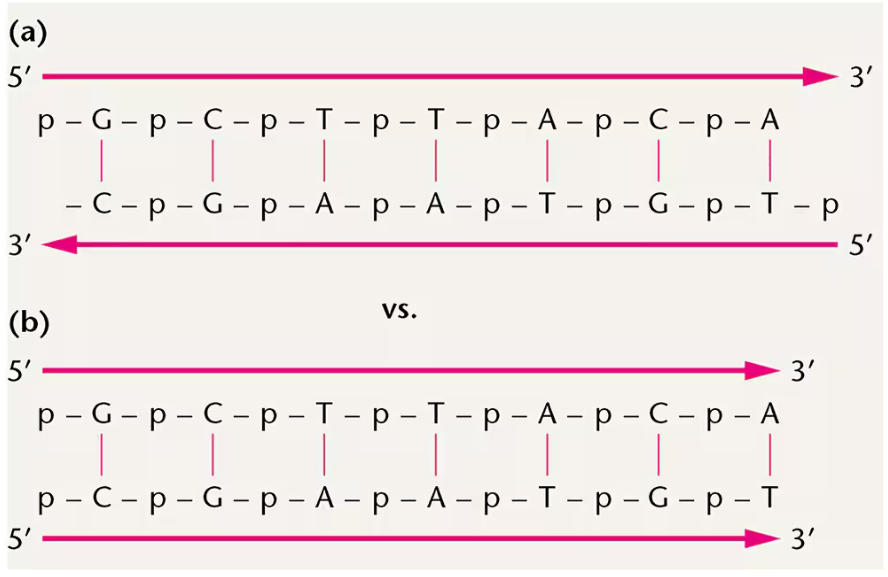Contrast the size of the single chromosome in bacteriophage and T2 with that of E. coli. How does this relate to the relative size and complexity of phages and bacteria?
Table of contents
- 1. Introduction to Genetics51m
- 2. Mendel's Laws of Inheritance3h 37m
- 3. Extensions to Mendelian Inheritance2h 41m
- 4. Genetic Mapping and Linkage2h 28m
- 5. Genetics of Bacteria and Viruses1h 21m
- 6. Chromosomal Variation1h 48m
- 7. DNA and Chromosome Structure56m
- 8. DNA Replication1h 10m
- 9. Mitosis and Meiosis1h 34m
- 10. Transcription1h 0m
- 11. Translation58m
- 12. Gene Regulation in Prokaryotes1h 19m
- 13. Gene Regulation in Eukaryotes44m
- 14. Genetic Control of Development44m
- 15. Genomes and Genomics1h 50m
- 16. Transposable Elements47m
- 17. Mutation, Repair, and Recombination1h 6m
- 18. Molecular Genetic Tools19m
- 19. Cancer Genetics29m
- 20. Quantitative Genetics1h 26m
- 21. Population Genetics50m
- 22. Evolutionary Genetics29m
7. DNA and Chromosome Structure
Bacterial and Viral Chromosome Structure
Problem 31
Textbook Question
To gauge the fidelity of DNA synthesis, Arthur Kornberg and colleagues devised a technique called nearest-neighbor analysis, which determines the frequency with which any two bases occur adjacent to each other along the polynucleotide chain (J. Biol. Chem. 236: 864–875). This test relies on the enzyme spleen phosphodiesterase (see the previous problem). DNA is synthesized by polymerization of 5'-nucleotides—that is, each nucleotide is added with the phosphate on the deoxyribose. However, as shown in the accompanying figure, the phosphodiesterase enzyme cleaves DNA between the phosphate and the C-5' atom, thereby producing 3'-nucleotides. In this test, the phosphates on only one of the four nucleotide precursors of DNA (cytidylic acid, for example) are made radioactive with ³²P, and DNA is synthesized. Then the DNA is subjected to enzymatic cleavage, in which the radioactive phosphate is transferred to the base that is the 'nearest neighbor' on the 5' side of all cytidylic acid nucleotides.

Following four separate experiments, in each of which a different one of the four nucleotide types is radioactive, the frequency of all 16 possible nearest neighbors can be calculated. When Kornberg applied the nearest-neighbor frequency test to the DNA template and resultant product from a variety of experiments, he found general agreement between the nearest-neighbor frequencies of the two. Analysis of nearest-neighbor data led Kornberg to conclude that the two strands of the double helix are in opposite polarity to one another. Demonstrate this approach by determining the outcome of such an analysis if the strands of DNA shown here are (a) antiparallel versus (b) parallel:

 Verified step by step guidance
Verified step by step guidance1
Understand the concept of nearest-neighbor analysis: This technique determines the frequency of adjacent nucleotide pairs in a DNA sequence. It involves labeling one type of nucleotide with radioactive phosphorus (³²P), synthesizing DNA, and then enzymatically cleaving the DNA to identify the nucleotide adjacent to the labeled one.
Recognize the role of antiparallel versus parallel DNA strands: In an antiparallel configuration, the two DNA strands run in opposite directions (5' to 3' and 3' to 5'). In a parallel configuration, both strands run in the same direction (5' to 3'). This polarity affects the arrangement of nearest neighbors.
Set up the experiment for antiparallel strands: Label one nucleotide type (e.g., cytidylic acid) with ³²P, synthesize DNA, and cleave it enzymatically. Record the frequency of each nucleotide that appears as the nearest neighbor on the 5' side of the labeled nucleotide. Repeat this for all four nucleotide types.
Set up the experiment for parallel strands: Perform the same steps as in the antiparallel case, but assume both strands run in the same direction. Record the nearest-neighbor frequencies for each labeled nucleotide type.
Compare the results: Analyze the nearest-neighbor frequencies for both configurations. In the antiparallel case, the frequencies of complementary base pairs (e.g., A-T, G-C) will match between the template and product strands, reflecting the complementary and opposite polarity of the strands. In the parallel case, the frequencies will not align in the same way, as the strands are not complementary in the same directional context.
 Verified video answer for a similar problem:
Verified video answer for a similar problem:This video solution was recommended by our tutors as helpful for the problem above
Video duration:
1mPlay a video:
Was this helpful?
Key Concepts
Here are the essential concepts you must grasp in order to answer the question correctly.
DNA Structure and Antiparallel Strands
DNA is composed of two strands that form a double helix, with each strand running in opposite directions, known as antiparallel orientation. This means that one strand runs from the 5' to 3' direction, while the complementary strand runs from 3' to 5'. This antiparallel arrangement is crucial for DNA replication and function, as it allows for proper base pairing and enzymatic activity during processes like transcription and replication.
Recommended video:
Guided course

DNA Structure
Nearest-Neighbor Analysis
Nearest-neighbor analysis is a technique used to study the frequency of adjacent base pairs in a DNA sequence. By labeling one type of nucleotide with a radioactive isotope, researchers can track how often specific bases occur next to each other. This method provides insights into the structural and functional properties of DNA, including the understanding of base pairing and the overall fidelity of DNA synthesis.
Recommended video:
Guided course

Chi Square Analysis
Phosphodiester Bond and Enzymatic Cleavage
The phosphodiester bond links nucleotides in a DNA strand, connecting the 5' phosphate group of one nucleotide to the 3' hydroxyl group of another. Enzymes like spleen phosphodiesterase can cleave these bonds, resulting in the formation of shorter DNA fragments. Understanding how these enzymes work is essential for analyzing DNA structure and function, as they play a key role in processes such as DNA replication and repair.
Recommended video:
Guided course

DNA Structure

 2:39m
2:39mWatch next
Master Bacteria and Viral Chromosome Structure with a bite sized video explanation from Kylia
Start learningRelated Videos
Related Practice
Textbook Question
432
views
